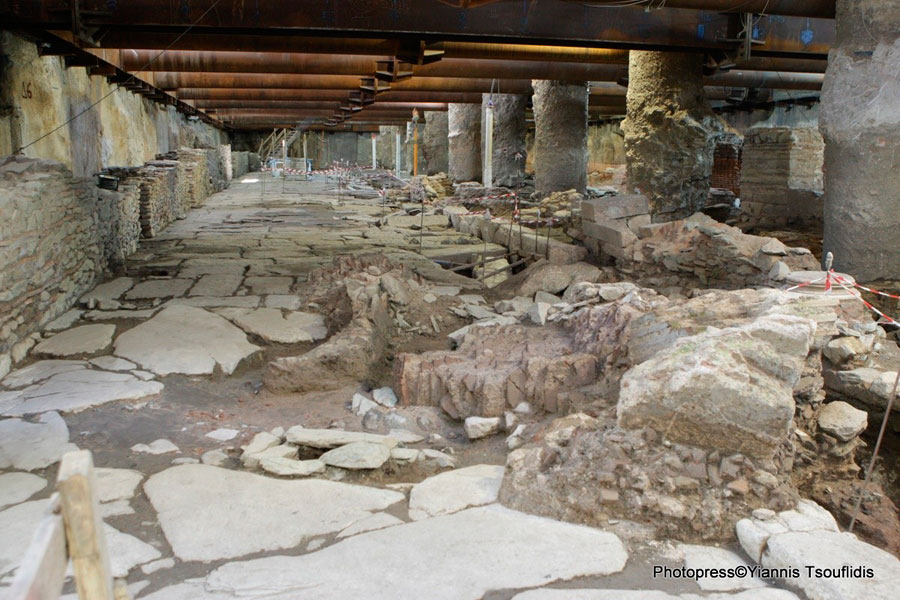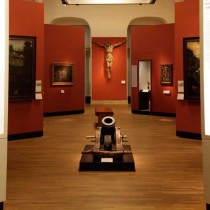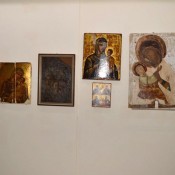40 post-graduate students of Byzantine Studies from around the globe visited the “Venizelos” metro station in Thessaloniki, as part of a 15-days summer course at the University of Thessaloniki.
The students had the opportunity to get a close look of the “most important Byzantine monument in the ‘most Byzantine’ city of the world”, Thessaloniki.
The young scientists came from Chile, Japan, Russia, France, Switzerland and Spain.
“The find located, a part of an ancient city, is impressive, most vivid. You descend a few steps and it is as if you were entering a… time machine. It is a tangible proof of the complete diachrony of the city. It is the core of Byzantine Thessaloniki. The Byzantine equivalent of Pompeii” said the head of the summer post-graduate school of Thessaloniki and Director of the Centre of Byzantine and Modern Greek Studies of L’Ecole des Hautes Etudes en Sciences Sociales in Paris, Paolo Odorico, to his students and future lecturers of Byzantine Studies around the world.
The programme of the summer school (which started last Monday at the Museum of Byzantine Culture in Thessaloniki) did not include visiting the finds of the metro excavations. “However we thought that it would be a chance –due to the dispute about them during the last months in Greece and the uncertain… future of the finds– for the 40 international students to get a glance of Byzantium. (…) Thessaloniki is the only, the most ‘Byzantine city’ in whole Europe. Maybe even in the whole world. The only ‘city-Byzantine museum’ which still has a diachronic element of Byzantium in all its periods (Early and Late Byzantine period) with evidence of all its aspects – history, architecture, religion, everyday life. The attempted destruction of the finds at the metro station will constitute –if it finally happens– if not the… fourth siege of the city in the modern world, certainly a plundering of the past and modern Thessaloniki. The exploitation and promotion of these sensational findings is an investment (a historic, architectural, scientific but also touristic and finally economic one) both for Thessaloniki’s present and future,” said Professor Paolo Odorico at the beginning of the summer school courses.
The students and teachers of the summer school descended in the depths of the ancient city – only 6 m beneath the modern Egnatia street and what they saw was the “heart” of Thessaloniki 10 centuries before.
Thrilled and… almost schocked after the lesson, post-graduate student Fernando Castellon, said: “We are scientists, but today only technocrats are regarded as scientists. What we saw was sensational. I do not know how much the preservation and promotion of the finds will cost (…), but the world certainly needs humanitarians. Otherwise it will cease to exist…”




